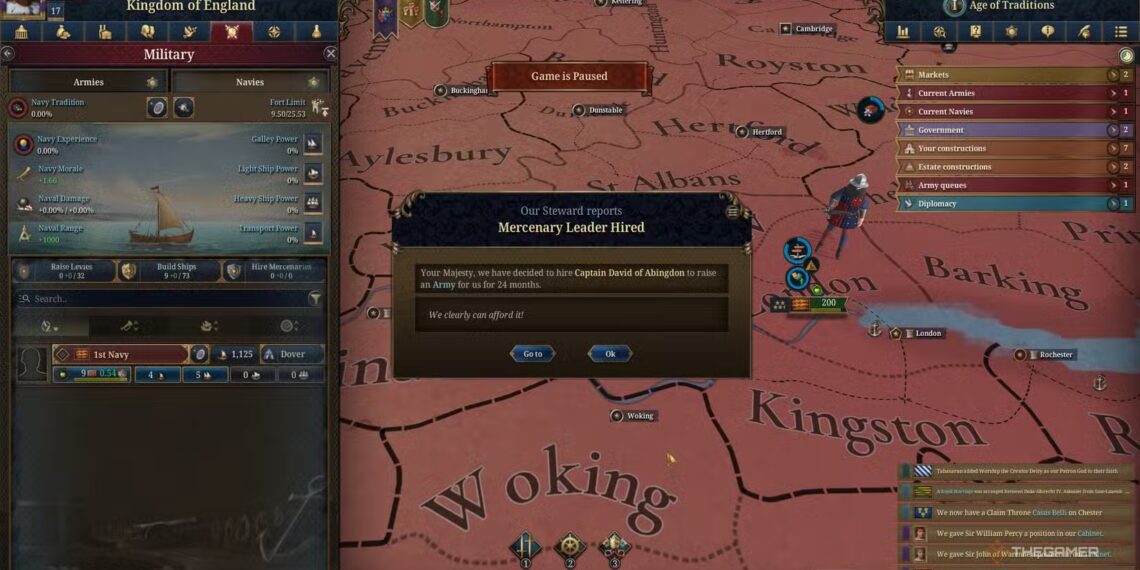Select Language:
Sometimes, war is unavoidable when ruling a country in Europa Universalis 5. Victory depends not just on how big your military is, but also on how well you form your militias, as this plays a crucial role in your country’s success during battles.
Your army’s setup in EU5 is very important. Each group of fighters has advantages and disadvantages that you need to consider both overall and in specific battle situations. Since different countries have specialized troops and terrain factors also influence combat, your military leaders have to plan carefully.
Army Composition Can Make Or Break Battles
Your choice of units can determine whether you win or lose. The game visually shows this with images, like hiring mercenary leaders for your armies.
Understanding Unit Types
In the beginning, your country will rely on civilian volunteers to fight, but eventually, you’ll maintain a professional, standing army. These soldiers are ready to fight on short notice, allowing civilians to return to their normal roles. As technology advances, having a powerful military becomes more important.
There are two main strategies to master for success: understanding the different troop types and placing them in the best positions on the battlefield. Each troop type has its unique strengths, and knowing how they work helps you position them advantageously.
Most armies fall into a few main categories:
- Infantry: Ideal for ground fights, charging into battle on foot with various weapons. They’re good for sieges and usually cost less to maintain.
- Archers: Provide ranged support, attacking from a distance and flanking the enemy, offering cover fire.
- Cavalry: Charge ferociously into close combat. They’re great for breaking through enemy lines and move quickly but tend to be more costly to keep.
- Artillery: Supply ranged support with heavy weapons, dealing damage from afar.
Battle Types And Unit Formations
When designing your army, consider each unit’s special abilities. Proper placement maximizes their effectiveness. Battles are typically organized into three main positions: center, left flank, and right flank. It’s also wise to keep some units in reserve as backup.
These positions mostly act independently, each attacking the enemy in their own way. Flanking units, like archers and artillery, should be positioned to fire on advancing foes without engaging directly in the front lines. Cavalry benefits from flanking, dealing extra damage when attacking from behind or sides. Infantry usually lines up in the center, fighting directly with the enemy, especially against large attacking forces. Your strongest infantry should handle the main battles, absorbing and dealing the biggest damage. Grouping similar units together provides support and coverage.
The game allows you to distribute troops evenly across the battlefront, which is helpful for beginners or if you haven’t specialized your units yet. It also factors in morale and supplies when assigning units to positions, influencing their effectiveness.
Using the terrain to your advantage is also vital; the land can provide cover and support, just like well-trained troops. Strategically positioning your strongest units where they can fight most effectively can turn the tide of battle, especially since units will generally attack opponents directly opposite to their position, but they can adjust their aim if needed. Planning your army’s formation with this in mind can give you an edge.







